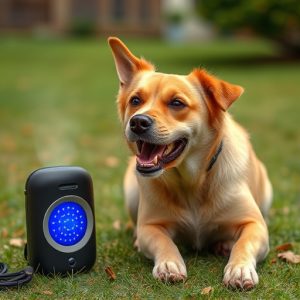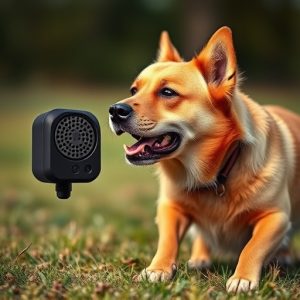Dog Training Tools: Safe Use of Ultrasonic Modifiers & Legal Regulations
Using ultrasonic behavior modifiers for dog training involves emitting inaudible sound waves to modi…….
Using ultrasonic behavior modifiers for dog training involves emitting inaudible sound waves to modify behaviors, but strict adherence to Electronic Pet Deterrent Safety Regulations is vital. Country-specific guidelines, like FDA Class II classification in the US, ensure device safety and pet welfare. Owners should research local rules, follow manufacturer instructions, and consider positive reinforcement methods to avoid potential harm during training.
“Unleash the power of positive reinforcement with dog training ultrasonic behavior modifiers—a modern tool in pet care. This comprehensive guide explores the fundamentals of electronic pet deterrents and their safety considerations, offering insights into effective training methods. We delve into the science behind ultrasonic technology, its benefits for canine behavior modification, and best practices for responsible use. Additionally, we navigate the regulatory landscape to ensure legal and safe integration into your pet’s routine.”
- Understanding Electronic Pet Deterrents: The Basics and Safety Considerations
- Dog Training with Ultrasonic Behavior Modifiers: How It Works and Effective Use
- Navigating Regulations: Ensuring Safe and Legal Use of Ultrasonic Pet Devices
Understanding Electronic Pet Deterrents: The Basics and Safety Considerations
Electronic pet deterrents, such as ultrasonic behavior modifiers, have gained popularity for their perceived effectiveness in training pets without physical punishment. These devices emit high-frequency sounds or vibrations that are designed to be unpleasant for animals, discouraging undesirable behaviors like barking, jumping on furniture, or digging. However, understanding the safety considerations surrounding these products is paramount before purchasing and using them.
The Electronic Pet Deterrent Safety Regulations vary by region, with some countries banning their use altogether due to potential health risks. These devices should never be used without supervision, as they can inadvertently harm pets if not properly calibrated or if the animal has unique sensitivities. It’s crucial to follow the manufacturer’s guidelines and consult a veterinarian or professional trainer for advice tailored to your pet’s specific needs.
Dog Training with Ultrasonic Behavior Modifiers: How It Works and Effective Use
Dog training with ultrasonic behavior modifiers involves using sound waves to encourage or discourage specific behaviors in dogs. These devices emit high-frequency sounds that are typically inaudible to humans but can be detected by canine ears, prompting them to alter their actions. The technology is based on the principle of positive reinforcement, where the dog associates a certain action with the ultrasonic signal and the subsequent reward or consequence. This method is particularly useful for addressing issues like barking, jumping, or pulling on leashes without resorting to traditional training methods that might involve punishment.
When using ultrasonic behavior modifiers, it’s crucial to follow Electronic Pet Deterrent Safety Regulations to ensure the well-being of your pet. These regulations outline guidelines for the emission levels and usage scenarios, emphasizing humane training practices. For optimal effectiveness, trainers should set the devices to emit sounds only when a specific behavior is exhibited, and adjust the sensitivity accordingly. Consistency in training, combined with the ultrasonic modifier, can help modify dog behaviors quickly while maintaining a safe and positive learning environment.
Navigating Regulations: Ensuring Safe and Legal Use of Ultrasonic Pet Devices
When considering an ultrasonic behavior modifier for your pet, it’s crucial to understand and navigate the safety regulations in place. These devices, designed as electronic pet deterrents, emit high-frequency sound waves that are inaudible to humans but can capture a dog’s attention. However, their use is heavily regulated to ensure animal welfare and consumer safety. Each country has its own set of guidelines; for instance, the US Food and Drug Administration (FDA) classifies these devices as Class II, requiring manufacturers to conduct pre-market notifications and device evaluations.
To ensure legal and safe use, pet owners should research and adhere to local regulations. Devices must be approved and labeled correctly, with clear instructions on usage and safety precautions. It’s essential to remember that while ultrasonic modifiers can be effective training tools, they are not a replacement for consistent, positive reinforcement training methods. Always prioritize your pet’s well-being and consult with a veterinarian or certified trainer if you have any concerns about the device’s suitability for your pet.
When using dog training ultrasonic behavior modifiers, it’s paramount to balance their effectiveness with electronic pet deterrent safety regulations. By understanding how these devices operate and navigating relevant laws, responsible pet owners can harness positive reinforcement while adhering to safe practices. Remember, the key lies in effective use and ensuring your chosen methods remain within legal bounds.


